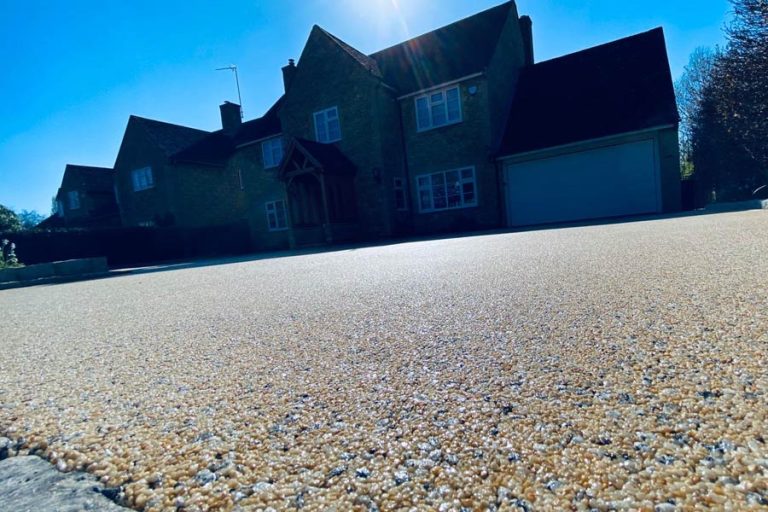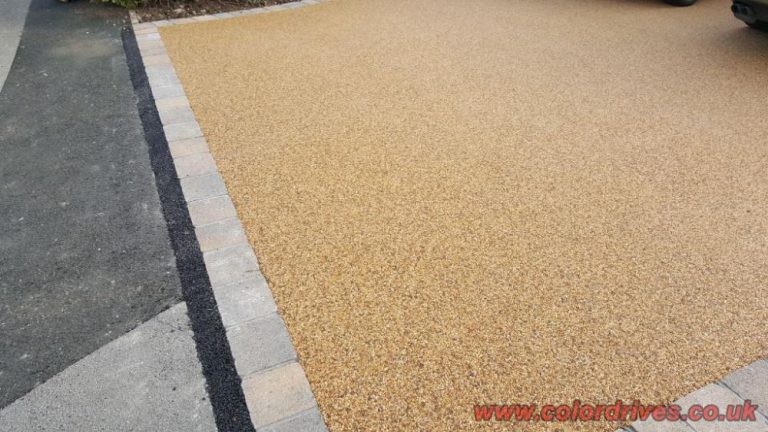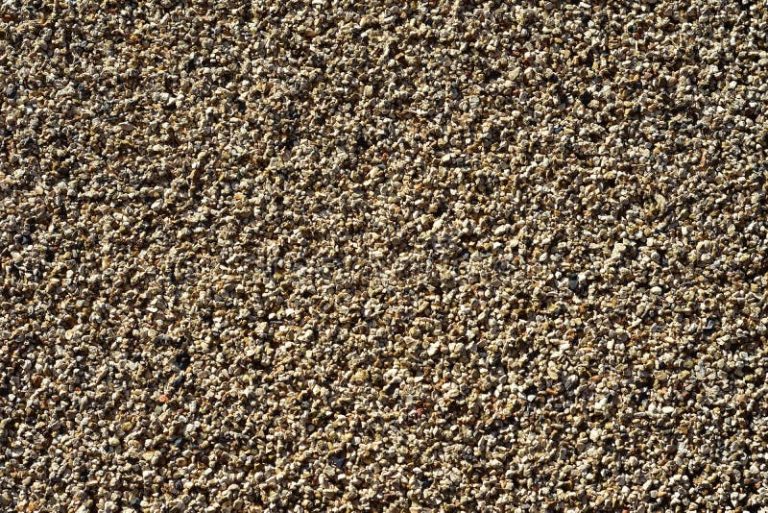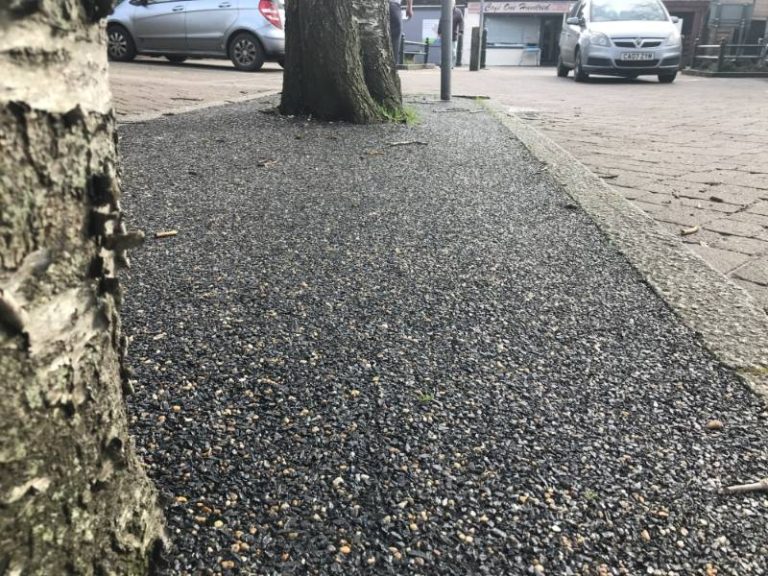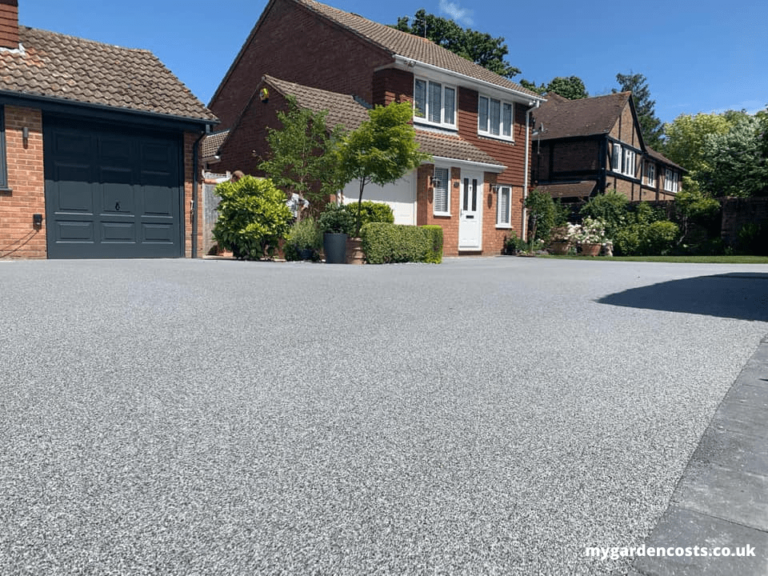Resin Bound Gravel Permeable A Sustainable Solution
Resin-bound gravel permeable paving offers a sustainable alternative to traditional paving materials. It combines the aesthetic appeal of gravel with the functional benefits of permeability, allowing water to naturally drain into the ground. This innovative approach reduces runoff, improves water quality, and helps mitigate urban flooding. Understanding the specifics of this material, from its composition to installation and maintenance, is key to realizing its full potential in various applications.
This guide delves into the details of resin-bound gravel permeable paving, exploring its characteristics, materials, installation, design considerations, performance, environmental benefits, and maintenance requirements. A comparison with alternative paving options, such as asphalt and concrete, highlights its advantages. Furthermore, cost analysis provides insights into the economic viability of this sustainable choice.
Introduction to Resin Bound Gravel Permeable Surfaces

Resin-bound gravel permeable paving is a modern paving solution that combines the aesthetic appeal of gravel with the functionality of a permeable surface. This material offers a cost-effective and environmentally friendly alternative to traditional paving options, allowing for water infiltration and reducing runoff.
This paving system utilizes a binder to hold gravel aggregates together, creating a stable and durable surface. The permeable nature of this system allows rainwater to soak into the ground, reducing the strain on local drainage systems and mitigating flooding risks. This approach contributes to sustainable urban development by preserving natural water cycles.
Key Characteristics and Benefits
Resin-bound gravel permeable paving exhibits several key characteristics that contribute to its growing popularity. These include high durability, permeability, and relatively low maintenance requirements. The resin binder creates a strong and resilient surface, resisting cracking and deformation over time. The permeable nature allows water to seep into the ground, reducing surface runoff and alleviating stress on drainage systems. The material’s inherent stability also makes it suitable for various applications, from pedestrian walkways to driveways.
Typical Applications
Resin-bound gravel permeable paving is suitable for a wide range of applications. Common uses include pedestrian walkways, driveways, parking areas, and even portions of landscaping. Its versatility makes it an attractive choice for both residential and commercial projects. In particular, this type of paving is increasingly used in areas prone to flooding or where stormwater management is a concern. The material’s aesthetic appeal also makes it suitable for areas where a visually appealing and environmentally conscious paving solution is desired.
Comparison to Other Paving Options
| Feature | Resin-Bound Gravel | Asphalt | Concrete |
|---|---|---|---|
| Durability | Highly resistant to cracking and deformation, depending on the resin type and application. | High, but susceptible to cracking and deterioration from extreme temperature fluctuations. | Highly resistant to cracking, but can be susceptible to weathering and staining. |
| Permeability | High, allowing water to infiltrate the ground. | Low water tends to pool on the surface. | Low water tends to pool on the surface. |
| Maintenance | Low, occasional cleaning and minor repairs. | Moderate, regular sealing and repairs are needed. | Moderate, regular cleaning and occasional repairs are needed. |
Materials and Composition
Resin-bound gravel permeable surfaces combine the aesthetic appeal of gravel with the functional benefits of permeability. The key to achieving this balance lies in the careful selection and precise proportioning of its constituent materials. Understanding these components and their roles is crucial for ensuring the long-term performance and effectiveness of the surface.
The successful creation of a resin-bound gravel permeable surface relies on a meticulous blend of materials. Each component plays a vital part in the surface’s overall performance, impacting its durability, permeability, and aesthetic qualities. This section delves into the specific materials and their contributions to the final product.
Key Components
The primary components of resin-bound gravel permeable surfaces include a binding agent, gravel aggregate, and sometimes, color pigments. These elements work together to create a robust and permeable pavement.
- Binding Agent: Typically, a polyurethane or epoxy resin is used as the binding agent. These resins provide the crucial adhesive strength that bonds the gravel particles together. Their strength and resistance to weathering are vital in ensuring the longevity of the surface. Polyurethane resins often offer better flexibility and resistance to cracking compared to epoxy resins, making them a suitable choice for areas subject to temperature fluctuations. The choice of resin directly affects the durability and resilience of the finished surface.
- Gravel Aggregate: Crushed stone or gravel is the primary aggregate used. The size, shape, and type of gravel directly influence the surface’s permeability and aesthetic qualities. The appropriate gravel selection is critical to the performance of the surface. The surface texture and appearance depend on the chosen gravel type.
- Color Pigments (Optional): Color pigments are sometimes added to the resin mix to achieve desired aesthetic effects. The pigments must be compatible with the resin to avoid compromising its performance characteristics. The choice of pigment color should be aligned with the intended aesthetic and match the surrounding environment.
Gravel Types
Different types of gravel exhibit varying characteristics, impacting the final surface’s performance and appearance. The selection of gravel should consider the intended use and aesthetic preferences.
- Crushed Stone: Crushed stone is a common choice for its strength and durability. Its angular shape helps create a stable surface structure, aiding in overall performance. The durability of crushed stone makes it suitable for high-traffic areas.
- Rounded Gravel: Rounded gravel offers a more aesthetically pleasing surface and is often preferred for its softer appearance. Rounded gravel tends to provide a smoother surface, which might be more desirable in residential settings. However, the lack of angularity might slightly affect the surface’s stability compared to crushed stone.
- Specific Grade and Size: The specific grade and size of gravel used directly impact the permeability and aesthetic appeal of the final surface. Larger gravel pieces will create a more textured surface, while smaller ones will result in a smoother surface. The gravel size and shape must be carefully selected to achieve the desired performance and aesthetic characteristics.
Typical Material Proportions
The proportions of materials in the mix can vary based on factors such as the desired permeability and the type of gravel used. However, typical proportions range from approximately 1 part resin to 3 to 5 parts gravel by volume.
| Component | Typical Proportion (Approximate) |
|---|---|
| Resin Binder | 1 part by volume |
| Gravel Aggregate | 3-5 parts by volume |
Note: Exact proportions are determined by professional evaluation and testing to ensure the optimal performance of the surface. Different suppliers and manufacturers may offer slight variations.
Installation and Construction Procedures
Resin-bound gravel permeable paving offers a durable and aesthetically pleasing alternative to traditional paving. Proper installation is crucial for achieving the desired performance characteristics, including permeability, durability, and longevity. Careful attention to detail in each step ensures a high-quality finished product that effectively manages stormwater runoff.
Surface Preparation
Thorough surface preparation is paramount for a successful resin-bound gravel installation. Inadequate preparation can lead to uneven surfaces, compromised bonding, and premature deterioration of the finished product. This crucial step ensures the resin binder effectively adheres to the substrate, creating a strong and stable base.
- The existing surface must be thoroughly cleaned of debris, loose soil, and any contaminants that could hinder the bonding process. This often involves removing existing paving materials or topsoil, depending on the existing surface type.
- The substrate should be compacted and leveled to ensure a smooth and consistent surface. This step is vital to ensure the resin-bound gravel is evenly distributed and avoids uneven settling over time.
- For a permeable surface, ensuring the sub-base is graded correctly is essential for proper drainage. This is often accomplished through adding layers of compacted gravel or crushed stone, depending on the specific application.
Tools and Equipment
The following tools and equipment are typically required for a resin-bound gravel installation:
| Tool/Equipment | Description |
|---|---|
| Shovels | Various sizes for handling gravel, sand, and other materials. |
| Rakes | Used for leveling and spreading materials. |
| Wheelbarrows | Transporting materials efficiently. |
| Compaction Equipment | Such as a plate compactor or roller, depending on the size of the project. |
| Measuring Tools | Including measuring tapes, levels, and straight edges to ensure precise measurements and levels. |
| Spray Equipment | For applying the resin binder evenly and efficiently. |
| Safety Equipment | Gloves, eye protection, and dust masks. |
Installation Steps
A systematic approach to installation ensures consistent quality and minimizes errors.
- Substrate Preparation: The existing surface is prepared by removing any loose materials, ensuring proper compaction and grading. This step ensures the base is stable and ready to receive the resin-bound gravel mixture.
- Resin Application: The resin binder is meticulously applied to the prepared surface using specialized equipment. The resin is then mixed with the aggregate, creating a homogeneous mixture.
- Aggregate Placement: The prepared mixture of resin and aggregate is evenly spread across the prepared surface using rakes. This step requires precision to achieve a uniform and aesthetically pleasing finish.
- Compaction and Finishing: The newly placed mixture is compacted to achieve a dense and stable surface. This step ensures the resin-bound gravel is securely bonded to the substrate and avoids potential settling issues.
- Curing and Maintenance: The resin-bound gravel is allowed to cure for a specific period, as indicated by the resin manufacturer. Proper maintenance is critical to ensure the longevity and performance of the permeable paving system.
Design Considerations for Resin-Bound Gravel Permeable Paving: Resin-Bound Gravel Permeable
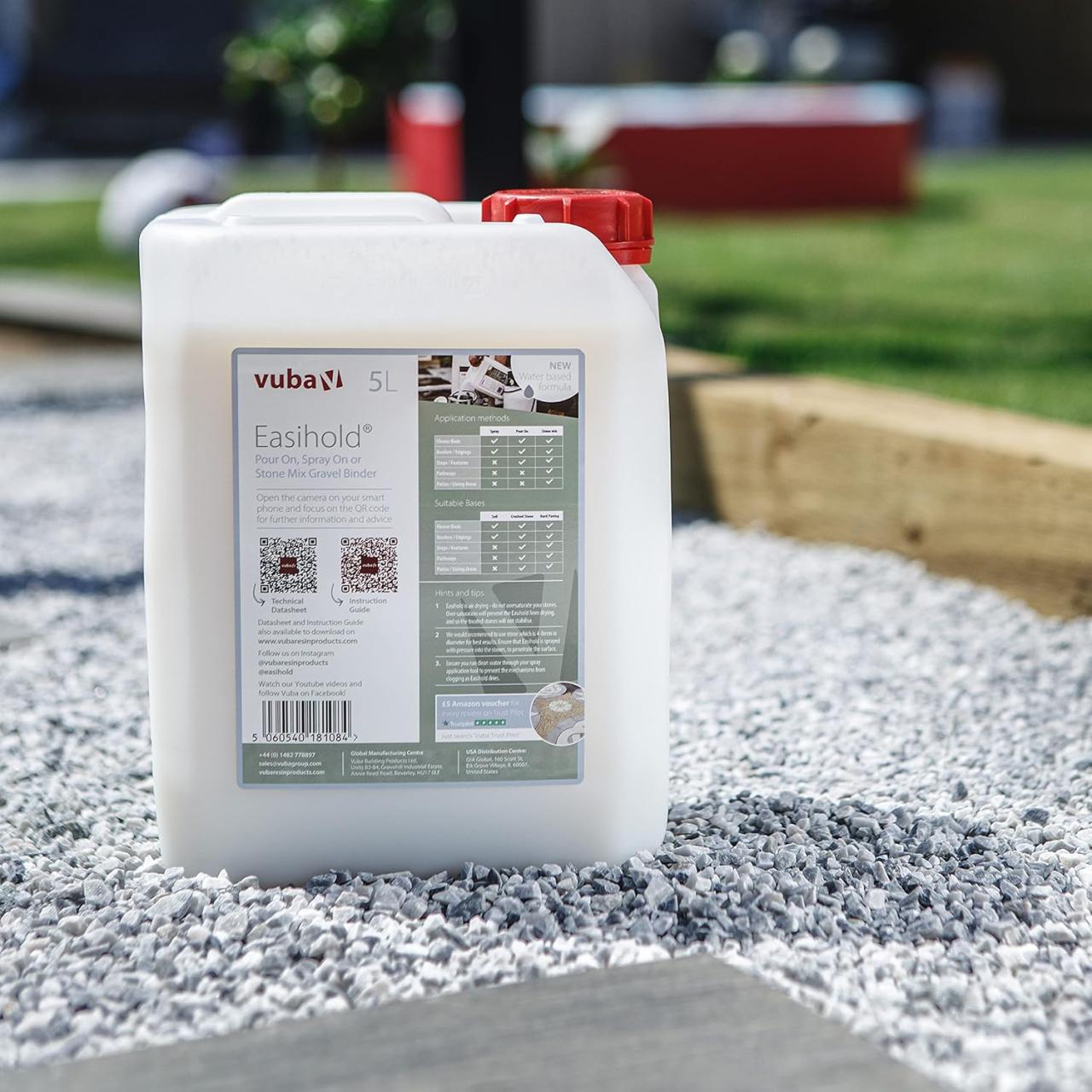
Source: ssl-images-amazon.com
Resin-bound gravel permeable paving offers a sustainable and aesthetically pleasing alternative to traditional paving materials. Effective design is crucial to maximize its benefits, including enhanced drainage, reduced runoff, and minimized environmental impact. Careful consideration of various factors is essential to ensure the long-term functionality and visual appeal of the project.
Successful implementation of resin-bound gravel permeable paving hinges on a thorough understanding of site conditions, traffic patterns, and aesthetic preferences. This understanding allows for optimized designs that integrate seamlessly with existing landscapes and effectively manage water runoff. A well-planned design minimizes issues like ponding, erosion, and potential damage to surrounding infrastructure.
Site Analysis and Assessment
Thorough site analysis is fundamental to successful resin-bound gravel permeable paving design. This involves evaluating the existing topography, soil characteristics, and drainage patterns. Understanding the soil’s permeability and drainage capacity is critical for determining the appropriate layer thickness and gravel type. This analysis helps to identify potential drainage issues and ensures the paving system can effectively manage water runoff. A detailed survey of the site, including elevation profiles and existing utilities, is also critical. For example, identifying areas with existing water features, such as ditches or streams, is vital to ensure the permeable paving system does not interfere with natural drainage pathways.
Drainage and Water Management Optimization
Optimizing drainage and water management is crucial for the long-term performance of resin-bound gravel permeable paving. Proper design should incorporate features that facilitate water infiltration into the ground. This involves careful consideration of the slope of the paving surface and the placement of drainage inlets. The use of French drains or other drainage systems can also be integrated into the design to effectively manage water runoff and prevent ponding. For instance, strategically placed swales or rain gardens can capture and direct rainwater to designated infiltration areas.
Pedestrian and Vehicular Traffic Flow
Considering pedestrian and vehicular traffic flow is essential for ensuring the safety and usability of the permeable paving. The design should accommodate anticipated traffic volumes and patterns. The choice of gravel size and resin binder will affect the overall durability and resistance to wear and tear. Clear walkways and designated areas for vehicular access need to be incorporated into the design. Consideration of accessibility for individuals with disabilities is also important. For example, using a specific gravel size that minimizes trip hazards or providing ramps or tactile paving for improved accessibility.
Integrating into Existing Landscapes
Integrating resin-bound gravel permeable paving into existing landscapes requires careful consideration of the surrounding environment. The design should harmonize with the existing vegetation, hardscapes, and architectural styles. This involves matching the color and texture of the paving to the existing surroundings. The paving should complement the overall aesthetic of the site and not disrupt the natural flow of the landscape. Consideration of the surrounding landscaping should also include factors like the presence of trees, shrubs, and other plants. The design should also account for potential future landscaping modifications or additions. For example, using native plants that thrive in the area can enhance the integration with the local ecosystem and contribute to the overall aesthetic appeal of the site.
Performance and Durability
Resin-bound gravel permeable paving demonstrates impressive long-term performance and durability, making it a suitable choice for various applications. Its resilience to environmental stresses, coupled with its inherent permeability, contributes to its lasting value. This section delves into the key factors that influence the longevity of this paving material, including its resistance to weathering, freeze-thaw cycles, and overall performance in different climate zones.
The durability of resin-bound gravel permeable paving is heavily dependent on the quality of the materials used, the precision of the installation process, and the design considerations specific to the project’s environment. Factors such as the type of resin binder, the size and quality of the gravel, and the compaction techniques employed during installation significantly affect the material’s lifespan and resistance to degradation.
Long-Term Performance Characteristics
Resin-bound gravel permeable paving exhibits excellent resistance to cracking and deformation over time, even under substantial traffic loads. This is attributed to the strong bond between the resin binder and the gravel aggregates, which distributes stress effectively. Properly installed surfaces typically demonstrate minimal deterioration over extended periods, retaining their permeability and structural integrity. This sustained performance is particularly advantageous in areas prone to heavy foot traffic or vehicular use.
Factors Influencing Durability, Resin-bound gravel permeable
Several factors contribute to the long-term durability of resin-bound gravel permeable paving. These include:
- Quality of Resin Binder: The type and quality of the resin binder significantly influence the material’s resistance to weathering, UV degradation, and chemical attack. A high-quality, UV-resistant binder ensures that the surface maintains its aesthetic appeal and structural integrity over time. For example, using a binder formulated with specific polymers can enhance resistance to fading and discoloration.
- Gravel Aggregate Properties: The selection of gravel aggregates plays a crucial role. The size, shape, and durability of the gravel particles influence the overall strength and stability of the paving. Aggregates with a high resistance to abrasion and weathering, such as crushed stone or recycled materials, contribute to a more durable surface.
- Installation Techniques: Proper installation procedures are paramount. Adequate compaction of the gravel and thorough resin application are essential to create a strong and uniform surface. This includes ensuring the resin binder is evenly distributed throughout the gravel, promoting a strong and consistent bond.
- Design Considerations: Specific design parameters, such as the thickness of the paving layer and the drainage system, influence the overall performance and durability. A well-designed system ensures proper water drainage and prevents waterlogging, which can cause damage over time.
Resistance to Environmental Factors
Resin-bound gravel permeable paving demonstrates notable resistance to various environmental factors, including freeze-thaw cycles. The resin binder acts as a protective barrier, mitigating the expansion and contraction forces that can damage traditional paving materials. This resistance to freeze-thaw cycles is particularly crucial in regions with significant seasonal temperature fluctuations.
- Freeze-Thaw Cycles: The resin binder helps prevent damage caused by the expansion of water within the pavement during freezing temperatures. The material’s ability to withstand repeated freeze-thaw cycles contributes to its durability in cold climates. For instance, in regions with frequent temperature fluctuations, this material has shown exceptional performance.
- UV Degradation: The resin binder’s resistance to UV radiation prevents the surface from fading or cracking due to prolonged exposure to sunlight. This characteristic ensures the pavement retains its aesthetic appeal over its lifespan.
- Chemical Resistance: Resin-bound gravel permeable paving often exhibits a degree of resistance to certain chemicals. This is particularly important in areas exposed to chemicals, such as industrial sites or areas with significant traffic flow.
Performance in Different Climate Zones
The performance of resin-bound gravel permeable paving varies slightly depending on the specific climate zone. Factors such as temperature extremes, rainfall patterns, and freeze-thaw cycles influence the material’s long-term durability. Areas with high rainfall might require a more robust drainage system, while regions with extreme temperatures may benefit from specific binder formulations.
- Hot Climates: In hot climates, the material’s resistance to thermal expansion and contraction is crucial. Appropriate binder selection and proper installation practices are critical to prevent cracking or deformation.
- Cold Climates: The material’s ability to withstand freeze-thaw cycles is paramount in cold climates. The binder’s composition and the gravel’s durability directly affect the pavement’s ability to withstand repeated freezing and thawing.
- Wet Climates: In regions with high rainfall, proper drainage design and installation are vital. The paving must be installed to effectively manage water runoff, preventing waterlogging and potential damage.
Environmental Benefits of Resin-Bound Gravel Permeable Paving
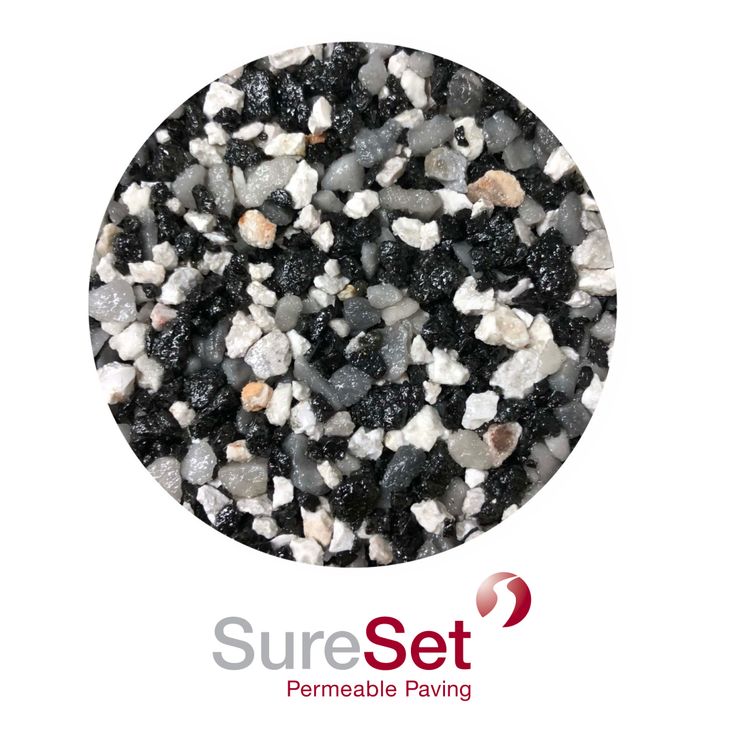
Source: pinimg.com
Resin-bound gravel permeable paving offers significant environmental advantages over traditional impervious surfaces. Its ability to absorb rainfall minimizes runoff, reducing the strain on drainage systems and mitigating the risk of flooding. This approach also improves water quality by filtering pollutants before they reach water bodies.
Permeable paving contributes to a healthier urban environment by promoting natural water infiltration and reducing the urban heat island effect. This translates to a more sustainable and resilient infrastructure, beneficial for both the immediate community and the larger ecosystem.
Stormwater Management
Permeable paving systems effectively manage stormwater by allowing water to infiltrate the ground. This process helps to recharge groundwater supplies, reducing the need for artificial water storage and treatment. In urban areas, where rainfall often exceeds the capacity of traditional drainage systems, permeable paving can prevent flooding and associated damage. This is particularly crucial during heavy downpours and storm events.
Reduced Runoff and Improved Water Quality
Compared to traditional impervious surfaces, permeable paving significantly reduces runoff volume. This reduction translates directly to decreased strain on stormwater management infrastructure. The infiltration process allows water to filter through the gravel and underlying soil, removing pollutants and sediments before they enter the water table. This filtering action improves water quality, protecting water bodies and supporting aquatic ecosystems.
Mitigation of Urban Flooding
Permeable paving can play a crucial role in mitigating urban flooding. By absorbing rainwater, it reduces the volume of runoff that flows into storm drains and rivers. This is particularly important in areas prone to flash floods or where traditional drainage systems are overwhelmed during heavy rainfall. Studies have shown that the implementation of permeable paving in urban areas can significantly reduce the risk of flooding and associated property damage. For instance, a city implementing permeable paving in a low-lying area experiencing frequent flooding could observe a substantial decrease in flood incidents. Similarly, in areas with aging or inadequate drainage systems, permeable paving can provide a cost-effective and environmentally friendly solution.
Maintenance and Repair
Resin-bound gravel permeable paving, while durable, requires regular maintenance to preserve its aesthetics and functionality. Proper upkeep ensures the surface remains in excellent condition, prolonging its lifespan and minimizing costly repairs. This section details the necessary procedures for maintaining and repairing this type of paving.
Maintaining resin-bound gravel permeable paving involves a combination of regular cleaning and occasional repairs. Addressing minor issues promptly prevents them from escalating into more significant problems. A proactive maintenance schedule helps ensure the paving remains attractive, functional, and cost-effective over its expected lifespan.
Cleaning Procedures
Regular cleaning is crucial for maintaining the appearance and performance of resin-bound gravel permeable paving. This involves removing debris, dirt, and other contaminants that can accumulate over time.
- Initial Cleaning (quarterly): Use a soft-bristled broom or a gentle pressure washer to remove loose debris, leaves, and dust. This initial cleaning helps prevent the buildup of more substantial dirt and grime.
- Deep Cleaning (annually): For more thorough cleaning, a power washer can be used, but be mindful of the pressure setting to avoid damaging the resin binder. Consider using a specialized cleaning solution designed for permeable paving if needed, always following the manufacturer’s instructions.
- Post-Cleaning Inspection: After cleaning, inspect the surface for any signs of damage or deterioration. This inspection allows for prompt action on any issues identified.
Repairing Minor Damage
Minor damage, such as small cracks or missing gravel, can be easily repaired to prevent further deterioration.
- Crack Repair: For small cracks, use a patching compound specifically designed for resin-bound gravel surfaces. Follow the manufacturer’s instructions for application and curing times.
- Gravel Replacement: If gravel is missing, carefully remove the damaged area, ensuring you don’t disturb the underlying resin binder. Replace with compatible gravel and gently press it into place.
- Addressing Uneven Surfaces: If sections of the paving are uneven, this may indicate underlying issues. In such cases, consult a professional paving contractor to diagnose and address the root cause.
Extending Lifespan
A well-maintained surface will last significantly longer than one neglected.
- Regular Inspection: Regular inspections, performed at least every six months, will identify potential problems early on, preventing them from worsening.
- Addressing Roots and Tree Roots: Carefully monitor the paving for signs of tree root intrusion. Addressing such issues early on is crucial to prevent significant damage. Consult a specialist if needed.
- Protecting from Extreme Weather: In areas prone to heavy frost or extreme temperatures, consider using protective coverings during these periods to shield the surface from potential damage.
Maintenance Frequency
The frequency of maintenance tasks will depend on factors like the traffic volume, climate conditions, and the specific type of resin-bound gravel used.
| Task | Frequency |
|---|---|
| Initial Cleaning | Quarterly |
| Deep Cleaning | Annually |
| Crack Repair/Gravel Replacement | As Needed |
| Inspection | Every Six Months |
Cost Analysis and Economic Viability

Resin-bound gravel permeable paving, while offering significant environmental and functional advantages, requires a thorough cost analysis to assess its economic viability compared to traditional paving materials. Understanding the upfront and long-term costs is crucial for informed decision-making in project planning and budgeting.
Cost Comparison of Paving Materials
A comprehensive comparison of paving materials considers installation, maintenance, and lifecycle costs. This analysis allows for a balanced evaluation of the financial implications of each option.
| Paving Material | Installation Cost | Maintenance Cost | Life Cycle Cost |
|---|---|---|---|
| Resin-Bound Gravel | Generally lower than concrete, comparable to asphalt, but dependent on project scale and complexity. Labor costs may vary depending on local rates and expertise. | Low maintenance, typically requiring only occasional cleaning and minor repairs. Resin-bound gravel surfaces are highly resistant to cracking and weathering, minimizing long-term maintenance needs. | Over the lifecycle, resin-bound gravel often proves cost-effective due to lower maintenance and potential savings from reduced runoff management and associated infrastructure costs. |
| Asphalt | Relatively moderate installation cost, depending on the size and complexity of the project. It may be more expensive than resin-bound gravel in some cases due to specialized equipment and labor demands. | Requires regular maintenance, including crack sealing and patching. Asphalt can be susceptible to cracking and rutting, increasing long-term maintenance expenses. | Asphalt’s lifecycle cost can vary, potentially being higher than resin-bound gravel due to ongoing maintenance requirements and the need for replacement or repair at intervals. |
| Concrete | Generally higher than both resin-bound gravel and asphalt, reflecting the substantial material costs and specialized labor involved in installation. | Concrete surfaces may require periodic cleaning and repairs. Concrete can be susceptible to cracking, especially in areas experiencing significant temperature fluctuations. Long-term maintenance needs can be substantial. | Concrete’s lifecycle cost tends to be higher than resin-bound gravel and asphalt due to higher installation costs, ongoing maintenance requirements, and potential for costly repairs or replacements. |
Factors Influencing Installation Costs
Several factors can influence the overall installation cost of resin-bound gravel permeable paving. Project size, site conditions, material selection, and labor costs are crucial considerations. Accessibility, ground preparation, and any necessary drainage modifications also affect the final price.
Factors Influencing Maintenance Costs
The maintenance costs of resin-bound gravel permeable paving are generally low. Regular sweeping or pressure washing is usually sufficient to maintain the surface’s aesthetic appeal. Potential for occasional repairs to minor damage is minimal.
Examples of Cost-Effective Projects
Numerous projects have demonstrated the cost-effectiveness of resin-bound gravel permeable paving. For example, a parking lot renovation in a suburban area replaced asphalt with resin-bound gravel, resulting in lower installation costs and substantial long-term savings on maintenance. Another case involved a public park project where the permeable paving system reduced the need for costly drainage upgrades, directly translating into a lower total project cost. These real-world examples highlight the financial advantages of choosing resin-bound gravel for various applications.
Last Word
In conclusion, resin bound gravel permeable paving emerges as a compelling choice for modern urban landscapes. Its combination of aesthetic appeal, functional benefits, and environmental advantages make it a promising solution for various applications. By understanding its materials, installation, and maintenance, you can effectively leverage this sustainable paving option. The long-term performance, coupled with reduced environmental impact, makes it an attractive and increasingly popular choice for environmentally conscious urban development.
